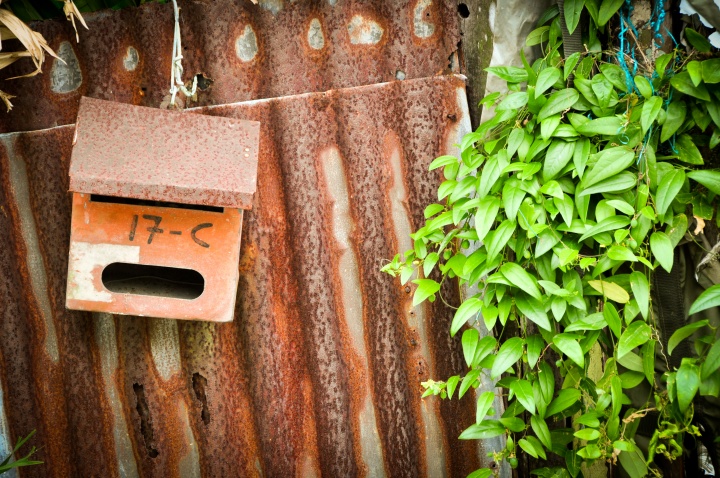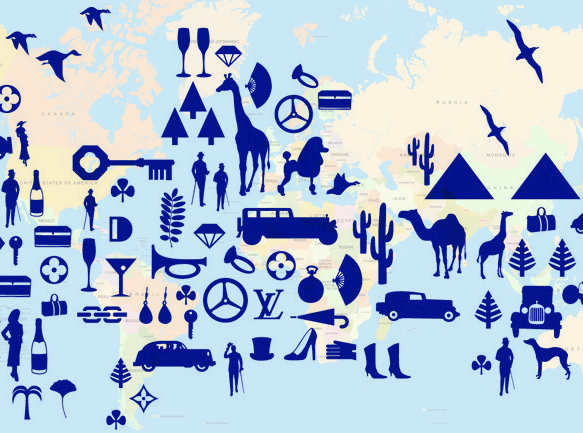I came across a short article about Kampong Buangkok, a village or “kampong” tucked in the corner near the junction of Ang Mo Kio Ave 5 and Yio Chu Kang. So, packed with a camera and my trusty 18-200mm lens, I went down, to savour the last sight of the Singaporean kampong, which is soon going to be overrun by modern civilization. My interpretation of this place in colors, in black and white.

I am greeted near the entrance, by a white shining Mercedes parked just along the road. Modernity contrast with good old life. Even the two free roaming fowls are a testimony of the kampong-ness of the this place. I remembered that my kampong also have lots of these fowl which I chased after when I was younger.

A lonely signboard at the entrance to the kampong. In this kampong, are a total of 28 families (18 Chinese and 10 Malay), paying about $13 in rent per week.

Rusty, weed over-grown gate. Used to be a key element to prevent people from intruding, but now abandoned as its owners moved on, into the city, away from this forsaken place.

The old lamp-post holding up the lamp that used to light up the street is in terrible state of disrepair, rust has taken its toll on the once strong support.

Tattered, weather beaten paint on rusted metal sheet that holds up the house, that is, the once occupied house.

Once a week, a postman will come to the kampong, on a motorcycle, to provide postal service. Letters are slotted into the tube here.

The mosque that is standing in the heart of the kampong. A prayer and meeting place for those who lived here. A place of support, help and divine encounter.

A peaceful, albeit untidy scene. Here, the people have a liking for plants, and you can see different types of planted ornamentals hanging from the roof, and a comfortable living area under the roof within.

How many years have past since I last seen such type of play-toy, reserved for the children decades ago? Nowadays, the children are much more privileged, having PSP, iPhone, etc. But does this small tricycle provide more fun, and helped build the bond between parents and children? I ponder.

A quiet courtyard, with a rudimentary tea drinking and catching up table. A rusted weighting machine stands just beside the door, and I can imagine perhaps this was an important tool of trade in the earlier days. Now, everything here is quiet. It’s a little disconcerting.

I remembered how my grandmother used to cook in the open kitchen with wood (not even gas). In fact, this is probably an upgraded version of the kitchen. Then again, it’s simple, functional and help meet the needs of its occupant – the 3 meals we so take for granted in the modern city.

Greenery caught my eyes. In the right distance, I spotted an old road sign, which is still using the 4 digit postal code. The four-digit system was introduced in 1979. This means the signboard is at least 30+ years old.

Birds are still chirping away in this household. I wonder for how long it will be able to chirp in the open and free-for-all “air-space”, something it will miss once its owner moves into a HDB flat.

A relatively narrow road measuring perhaps 3-meters serves the kampong.

A close-up look at the mosque, called a Surau. This is the Lorong Buangkok Al-Firdaus Mosque I suppose.

The small “parking lot” for these two motorcycles. Everyday, the people will come home from work on these bikes, park in front of the “porch”, and walk it, perhaps with dinner awaiting them. Simple, straightforward living.

The junction that houses a more modern kampong house on the right, viz-a-viz a more run-down, and traditional metal sheet house on the left.

I wonder if this mail box is still in use. It’s so rusted, and open, that in the recent rainy and stormy days, it is safe to assume all the mail and letters inside it will be soaked with rainwater – an undesirable outcome.

Does anyone ever though of this idea? Tie string from the tree, and swing your way home. This is what I call innovation – makeshift innovation. 🙂

An algae-covered flood meter. Every now and then, flash floods would occur in this kampong, and people would have to walk around with their pants and sarongs rowed up.

I came in via taxi from Yio Chu Kang, and then Gerald Drive. Yes, I am very near to the kampong. In fact, if you follow the ‘1’, down lorong buangkok, and then turn left into lorong buangkok (yes, the same name!), you will be going into the kampong itself.

Beside the kampong, is the park connector path built by the National Parks (NParks). Residents can enter their home by straying from the tarmac path, and walk on the grass patch that leads to their kampong houses. Look, the path has been pretty well-travelled. Many people must have walked along this path over time.

As I was looking at the path, a girl on her old trusty bicycle passes me by, oblivious to my presence. “Going home, going home on my trusty little bicycle.”

A contrast of the new, and the old. The new has come; the old must go. This is a common refrain in many cases.

As I have mentioned, a part of the kampong is laying just next to the drain. Hence, it give rise to this unique door-over-the-drain arrangement that you see here. A very interesting way to guard your home. Frankly, the kampong spirit does away with doors in the olden days, when everyone in the neighbourhood know everyone else, and it is a safe place to leave the door open. Now, it is becoming more and more difficult to trust anyone. Perhaps this is “progression”?

Backyard of the kampong house. Here, we store all the unused building materials, less-used tools, and hang out clothes on the lines. I remember the officers from the environment agency love to spot check these places for any mosquito breeding, since we seldom check for stagnant water in the backyard.

This is here just to remind myself, the view of the entrance to the kampong. Perhaps it will still be around for a while, perhaps this is the last time I will see it. Then again, no one knows.

A last parting shot, as I finished my tour of the last kampong in Singapore. The view is taken from a petrol kiosk along the Yio Chu Kang road. Good bye, and perhaps good bye for good. I may not see you again, Kampong Buangkok.




